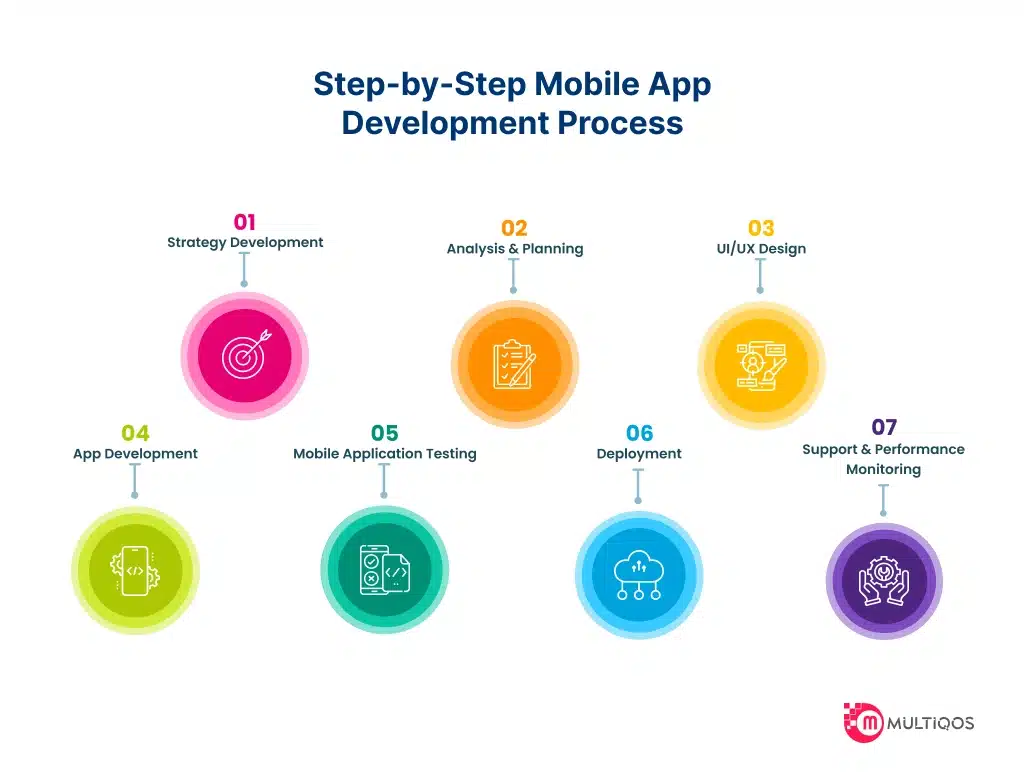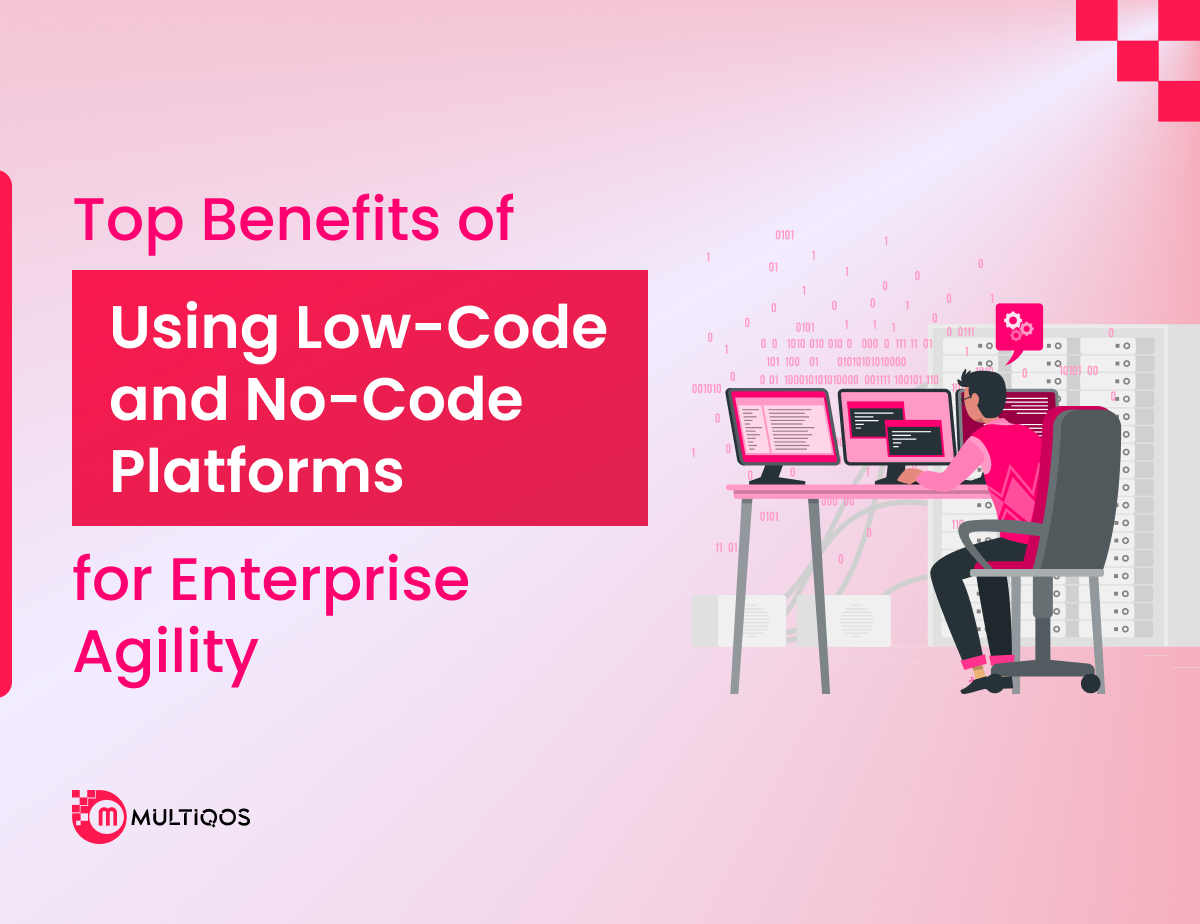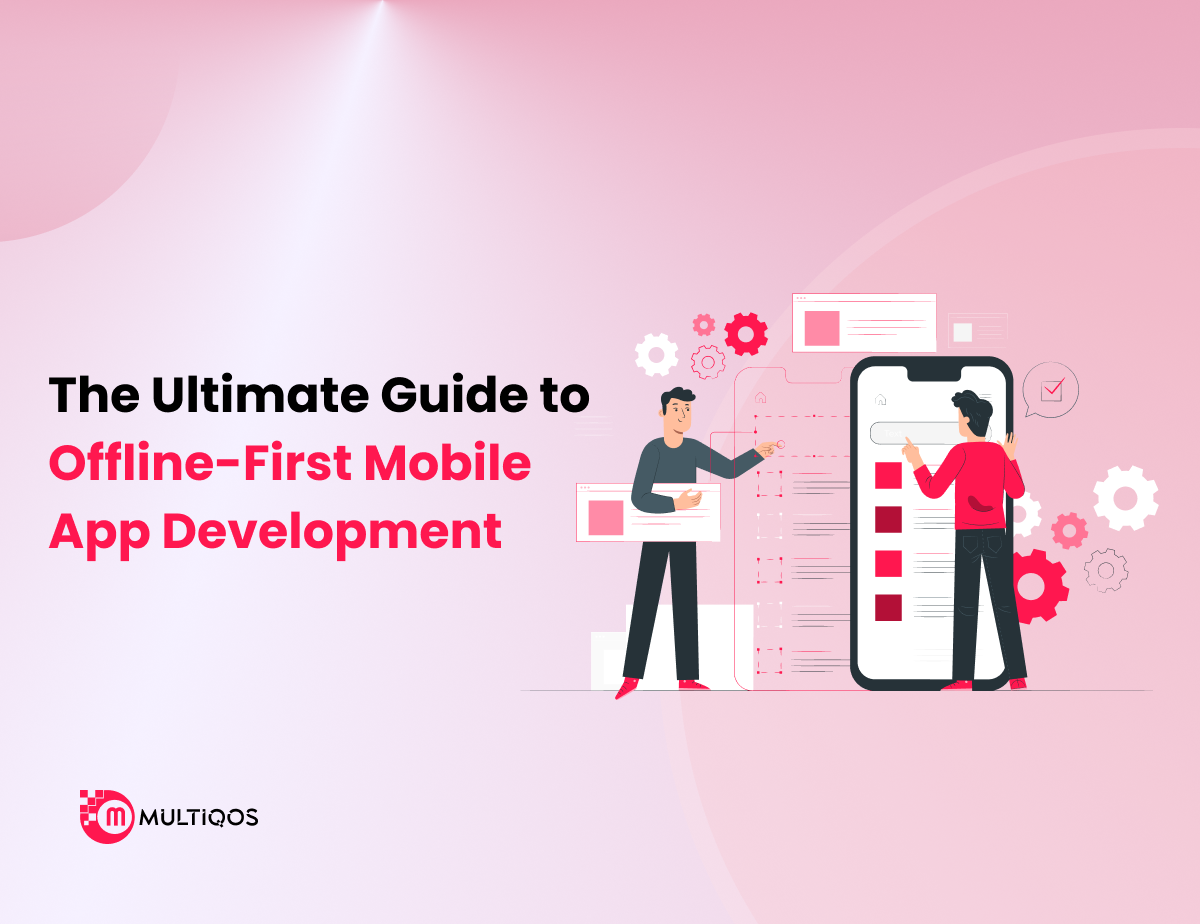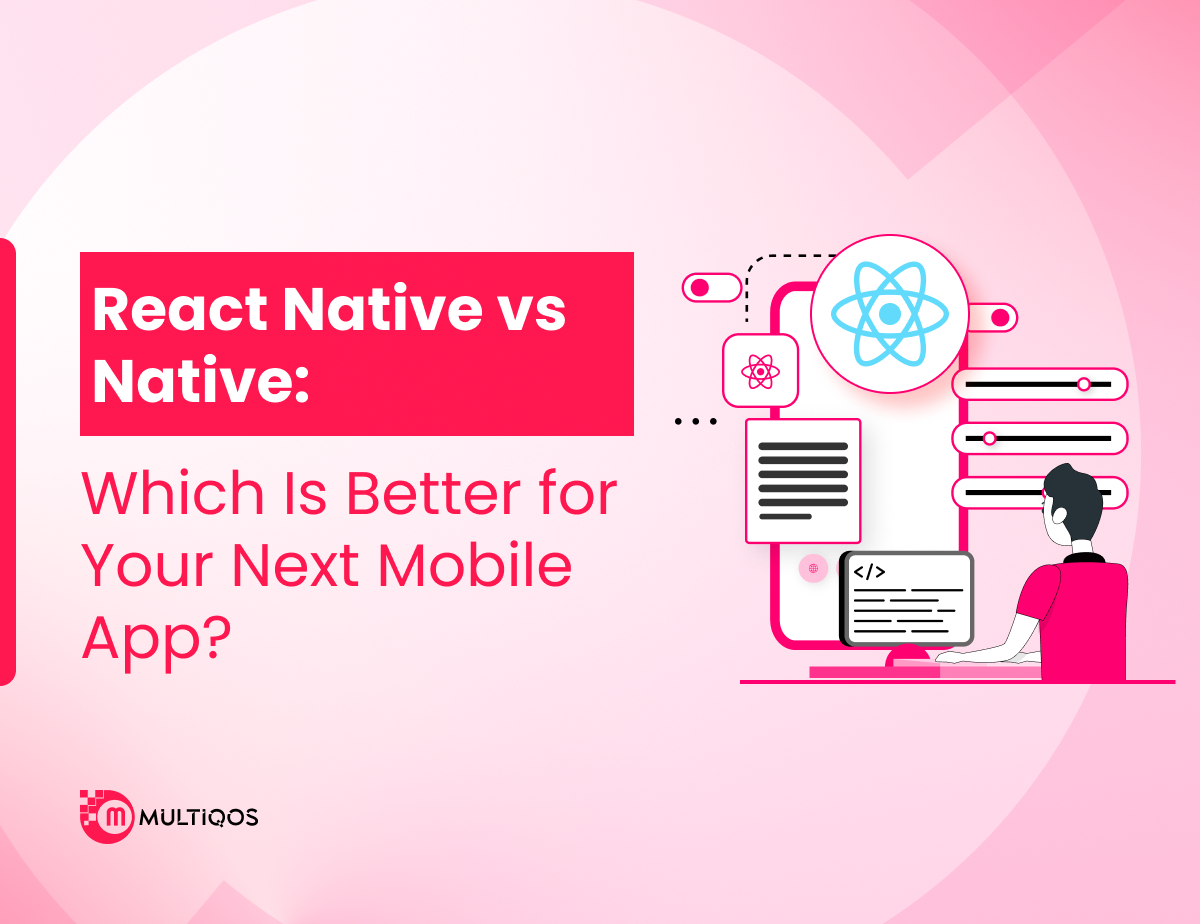Mobile App Development Process: Ultimate Guide to Build an App
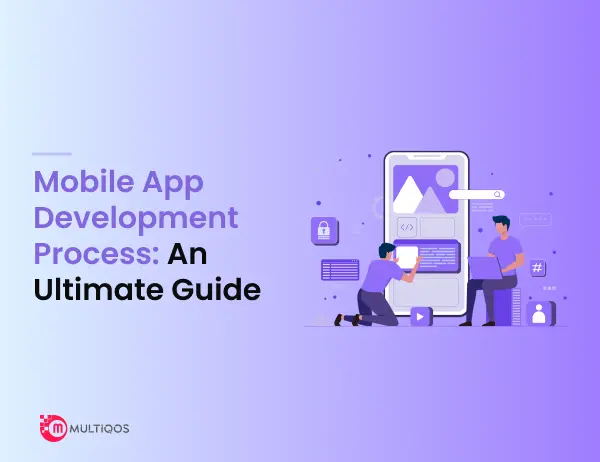
Mobile apps are no longer an option in the present-day digital world but are indeed a phenomenon changing the way we engage, shop, and discover.
Given that billions of applications are being downloaded on a yearly basis, it offers business majors and entrepreneurs a great chance in mobile application development.
As reported by Statista, in 2023, consumers will download 121 billion apps from the Google Play Store, compared to only 35 billion from the App Store. These numbers are expected to increase slightly, to 143 billion and 111 billion, respectively, by 2026.
Furthermore, the revenue from mobile applications is expected to reach $673 in total. This shows the growth of the market, which will increase to $8 billion by the year 2027.
But have you ever pondered the thought of what actually goes into the creation of these applications? In this post, we’ll take a look at the mobile app development cycle that businesses employ to design and develop custom and high-quality applications.
What Is Mobile App Development?
Mobile app development is the process of developing apps for smartphones. These apps can come pre-installed on the device, downloaded from an app store, or installed via a web browser. The mobile application usually uses an Internet connection to use Internet resources.
The app development process includes:
- Developing app that can be downloaded and run on the phone
- Subscribing to backend services such as data access with an API
- Checking how the app performs when used on various devices
To make sure your mobile app doesn’t fail and is scalable for more app users, you must take into account its device and screen resolutions. One has to consider how the app behaves under different network conditions and to what extent it can interact with other apps or services.
Step-by-Step Mobile App Development Process
Building an app is not something that can be done overnight. There are many steps your development team needs to take in order for your app to launch smoothly. Explore our guide to easy steps to start designing new mobile apps:
Step 1: Strategy Development
The first activity of the software application development process, inevitably, is to state the strategy. At last, one has to start being precise regarding the future application, its objectives, competence, and business model.
Identify Objectives
Regardless of whether you are developing a consumer-oriented or enterprise app, you normally start by defining the app’s key goals. Including:
- What issue does my application address?
- Who is its target audience?
- What impact do I want my app to have?
However, you may find yourself not needing to consider these questions at all since you probably already have the initial concept for your app. That being said, it is also helpful to jot down the key objectives just to remind oneself of the goals that are to be achieved.
Research Competitors
The next aspect of strategy planning is examining your current or potential competitors.
- Are there any similar applications that exist on the market?
- Are they popular with many installs and good reviews?
Through a study of your competition, you will be in a position to avoid errors that might have been made in your line of production. Further, it will provide an understanding of the current market in terms of other similar mobile apps and how one can stand out.
Select Platform
At the strategy development stage of app creation, you will also need to determine for which platform your tool is being developed. Will it be a custom Android app development? Or, is an iOS app development a better pick? Or, perhaps, it is a cross-platform application that you really want.
Choose the Monetization Method
Finally, to decide on the correct monetization technique, it is valid only if the delivered product or service constitutes a consumer application. In this case, you want to make direct money from your investment, but there are various options for you to pick from, including:
- In-app advertising
- Subscriptions
- Affiliate marketing
- Paid apps
The monetization method depends on the goal and the kind of application that is under construction. For instance, if you are creating a dating application, it will not be wise to set a price for download.
Instead, you’re more likely going to refer to the sales of references and subscriptions within an application.
Step 2: Analysis and Planning
The second activity to follow is analysis and planning. By this time, you would already know what kind of idea you want to pursue, have identified some scope for your idea, and generally have some notion as to which way you are going.
It is time to get down to business and employ business analysis services that will help you find all the particulars you require before proceeding to the design and development phases.
Balancing Functional and Non-Functional Requirements
First, you have to get a sense of what particular functional activities you expect from your mobility application. If you are developing an application for the finance industry, maybe it is necessary for opening new accounts, assigning credits, making payments, issuing statements, and others.
The flow of work that your software will have to carry out will be included in the section of your document that will be known as functional requirements. Thus, it will help to obtain a clearer vision of what functions need to be developed on the website.
After this, you will also have to consider the aspects of the software non-functional requirements. These pertain to the quality of how your system functions and greatly affect its usability.
Product Roadmap
Next up is defining your app’s roadmap. This process is like planning for the future and making detailed plans for how you will reach the end goals you have set. The day your Minimum Viable Product (MVP) is released, you want it to look good and avoid any potential failures.
So during the product roadmap, you write down all the things you want your app to be able to do. Then you make a list of tasks first and consider what can be added next.
Technology Stack
At the end of the research and starting stage is figuring out the skills desired for your mobile task. If you need to build an iOS app, you’ll need to hire iOS app developer.
If you need to create a cross-platform app, then you want someone who is well versed in new technologies like Titanium, Xamarin, and others that correspond to multiplatform improvement.
So, don’t forget to let your challenge compare the technical dynamics before proceeding.
Also Read: Tech Stack for Mobile App Development
Step 3: UI/UX Design
It has to be noted that a lot of attention has to be devoted to an app’s design if users are to experience the best. If it happens to be complicated, haphazard, or erroneous, then users will shift considerably towards rivals, and in the process, leave the tool that you have devoted time to creation.
This is why this step is time-consuming when you want to develop an app that users will love and engage with.
Therefore, UI/UX design implies comprehensible, convenient, entertaining, and user-oriented design. As we learn more about each of the design areas, let’s bear that in mind.
Information Architecture and Workflows
For the application design, one of the first kinds of preliminary steps is to determine rules in the context of the application’s information architecture. You will have to define what data will be in your app, along with its format and, most importantly, the way the user will interface with it.
From what has been discussed above, you will then develop workflow diagrams that can be of great help in signifying all the possible usages by an individual. In other words, they will allow you to ‘peek’ to see how your app’s navigation structure has been designed.
Wireframes
After that, the business analysts draw out the overall mock-up illustrations known as the wireframes. These are mostly conceptual models, which give an overview of the structure of your application.
Thus, wireframes commonly focus on aspects of user interaction and UI design. All of which makes sense because the specified end product should be a sleek application that users can easily navigate.
Style Guides
This is the reason style guides are made: so that the branding of your company can be searched under one source. These records usually contain the following design aspects of your app:These records usually contain the following design aspects of your app:
- Fonts
- Color scheme
- Spacing and positioning instructions are a type of organizing instruction used in writing in order to establish certain relations between the elements in the text.
- Buttons
- Widgets
- Other related design aspects
Compiling a list of style guides is a vital step toward outlining your design strategy for an app. They keep your interfaces and designs consistent and retain the overall feel and look of your application to make it cohesive.
Mockups
After you’ve created your app’s fashion guides, it’s time to transport them directly to mockups. Essentially, those are the final renderings of your app visuals, and they are created by making use of the fashion guide to the wireframes.
After completing this stage, the most essential component is to ensure that your layout is constant at some stage in the app.
Prototypes
Finally, the closing step of the UI/UX design process is growing prototypes.
Prototypes will let you simulate the user’s experience and the app’s complete workflow. That way, you get an excellent feel for how the whole thing will work in its entirety.
This stage of the process may be time-consuming, but don’t forget about it. When executed properly, a prototype permits you to come across any layout and functionality mishaps that you may need to restore.
Step 4: App Development
With the design work done, it’s time to proceed to one of the most crucial stages of your mobile app development process. As a rule, it consists of two components: the backend and the frontend.
Backend
The backend stage of app development involves designing the databases and server-side objects that are accountable for your app’s performance.
At this stage, your project team will select the right programming languages and start compiling the application. Furthermore, the choice of database engines and a hosting environment will also be made.
The last part of the mobile application development life cycle is important and defines the possibilities of your application in the future.
Therefore, if you wish to see your application grow with the number of users, then you should work with experienced software developers. They will help you navigate all the significant stages of application development and guarantee that your system can be easily expanded.
Frontend
The visible part of a mobile application for an end-user is the application’s frontend. There are three primary strategies for building it.
- Platform-specific. All these apps are developed specifically for each of the mobile platforms. Which means that the code for iOS is not shared with Android but rather written from scratch to fit the particular environment of each platform. It might be a more costly approach, but the speed and response that it offers can be worth the cost.
- Cross-platform. Such solutions are designed to work in various environments on the basis of a single code. They support multiple operating systems and are not limited to a single operating system. The main advantages of this approach are its relative cost and code reusability.
- Hybrid. These solutions consist of both platform-specific applications and web applications. They enable the application code to be written using standard web technologies and run within a native shell. They are beneficial if you need your app to support multiple platforms but do not have time to create a cross-platform solution.
Step 5: Mobile Application Testing
After the app development process is complete, one is supposed to proceed to the testing process. After all, it is crucial to prevent your developed solution from being unstable, insecure, or having bugs.
Five testing methods should be performed on your app to ensure that the best quality delivery is achieved before launch.
- Functionality: This is the time when you verify all the application features and make sure that everything is functioning properly.
- Performance: Thus, during the performance testing, one will have to focus on the app’s speed and capacity to handle a large number of concurrent users.
- Security: When developing enterprise applications such as mobile insurance apps and healthcare apps, which are informed by strict compliance, data security comes first. However, consumer apps must also build confidence in the consumer. So, before you go to the next stage of testing, make sure your app has no security issues and there are no weak spots in your system.
- Platform and Device: People use new mobile devices every year and receive updates on operating systems every month, so your application should be compatible with modern devices. Thus, it has to be tested on different devices or using emulators and simulators of these devices.
- Extended Review: One may find it useful to mention that it is possible to invite real users of the application before deploying it. Whether you decide to conduct a focus group or simply launch a beta version of your app, the main point here is to gather as much feedback as possible.
Step 6: Deployment
Once you are through with all the development phases, depending on the operating system you have been targeting, you will have to go through various distribution channels.
The strategy that an organization should follow in the deployment of a mobile application is as follows: Your app will either need to go through the App Store, owned by Apple, or the Play Store, owned by Google, or participate in private distribution.
Both of these stores require you to complete several forms and send your app for moderation. You should have realized that the App Store is known to be more selective concerning the applications that it permits into its marketplace.
Thus, problems may occur if your tool is developed for iOS and does not meet the highest level.
On the other hand, if you still wish to go for private distribution, do read into Apple’s Developer Enterprise Program and Google Android’s Alternative Distributions to know how to go about it.
Step 7: Support and Performance Monitoring
As seen before, women’s NGOs depend more on support and performance monitoring from the International Community, especially with the realization of democracy, than on funding from their own governments.
When the application is ready for release and users begin to download it actively, it’s high time to take a look at analytics. This step should not be underestimated, as it may take as much time as creating an app, and it should be done permanently.
Some of the most important KPIs you should look at are: Some of the most important KPIs you should look at are:
- App downloads
- Active users
- Average visit time
- Retention
- Churn
- Conversions
- Customer lifetime value
- Ratings
- Reviews
And also, do not forget to monitor such parameters as crashes, bugs, customer requests, and app performance. That way, you can refine your solution as the years progress, and that’s a very valuable asset.
All in all, it is crucial to note that work does not end with the creation of an app and the act of deploying it. On the contrary, it seems to be just beginning.
Mobile applications entail frequent updates that correspond with the current changes in the operating mechanism review guidelines as well as performance benchmarks. Otherwise, you decided to pay for a capable solution that would be useful only for a short period of time.
So, ensure to account for the reality that your software will need non-stop renovation if it is to be well worth it. Whether you pick it out to support yourself or with the help of an out-of-doors firm, it is completely up to you.
If you’ve chosen us as your partner with a software development enterprise for your mobile project, the seller will truly offer post-launch guide offerings. Thus, take the protection work off of your hands.
Got An App Idea? Turn Your Idea Into Reality With MultiQoS
At MultiQoS, we specialize in remodeling your app ideas into absolutely purposeful realities. Our seasoned team of mobile app developers has a confirmed track record of bringing lots of mobile apps into existence throughout numerous industries.
Whether you’re a startup or an established commercial enterprise, we provide expert guidance and execution to make sure your app meets market demands and user expectations.
Book a free consultation today and discover how MultiQoS can turn your ideas into impactful mobile applications that resonate with your audience and drive business growth.
FAQ on Mobile App Development Process
Mobile app improvement is critical for companies in the contemporary virtual age, as it provides an immediate way to hook up with customers, streamline operations, and innovate. These apps beautify client satisfaction, accumulate crucial records, improve logo popularity, and create new revenue possibilities.
The time it takes to develop a mobile app depends on its complexity. A highly complex app with many features can take about 12 months or more. A simpler app with fewer features might be completed in 4 to 6 months. For more precise timelines, consult our experts at MultiQoS.
Here are some mistakes to steer clear of when developing an app:
- Ignoring user interface design
- Not starting with a Minimum Viable Product (MVP)
- Failing to target the right audience
- Lacking a strategy for monetization
- Including too many features
It usually costs between $10,000 and $15,000 to develop a primary mobile app. However, the exact price varies based totally on elements like app requirements, complexity, region, and timeline. To estimate your app’s improvement fee, use this simple method: Development time × cost in keeping with hour = total app development cost.
Yes, you can update a mobile app after its launch to fix minor bugs and improve functionalities that may have become outdated. This ongoing maintenance and update helps keep your app relevant and user-friendly.
Get In Touch

